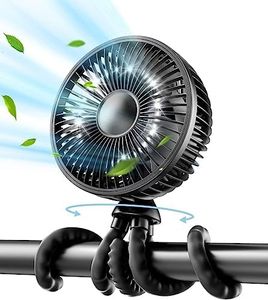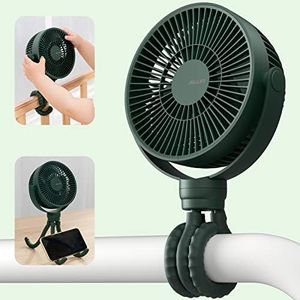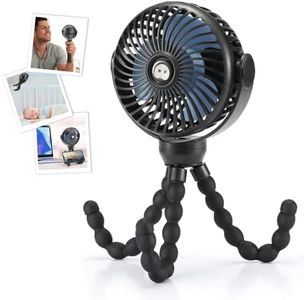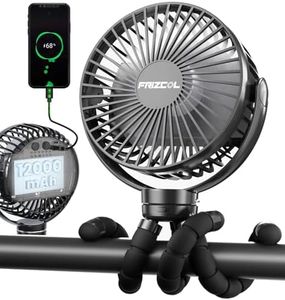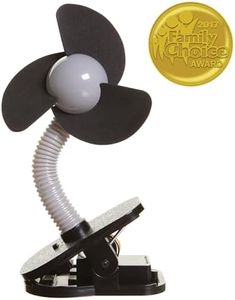We Use CookiesWe use cookies to enhance the security, performance,
functionality and for analytical and promotional activities. By continuing to browse this site you
are agreeing to our privacy policy
10 Best Stroller Fans
From leading brands and best sellers available on the web.Buying Guide for the Best Stroller Fans
Buying a stroller fan is a great way to keep your baby cool and comfortable during walks or on hot days. However, picking the right one isn't just about finding the most powerful or stylish fan. Instead, you should focus on safety, ease of use, flexibility, and how well the fan fits your particular stroller and lifestyle. Understanding the features that matter will help you select a fan that keeps your little one safe, comfortable, and happy. Don’t rush—think about where, when, and how often you'll use the fan to make sure it fits your needs perfectly.Attachment MethodThis refers to how the fan connects to your stroller. It’s important because a secure attachment means the fan stays safely in place, reducing risks and ensuring it’s always aimed where you want. Attachment types include clip-ons, flexible tripods, or straps. Clip-ons work well for standard stroller frames but may slip on unique or padded bars. Flexible tripods can bend and wrap around almost anything, making them versatile for most strollers. Straps are simple but may not hold as firmly with heavier fans. To choose, consider your stroller’s design and where you want to position the fan—go for the style that offers a snug fit and easy repositioning for your specific stroller.
Power SourceThis is how the fan gets its power. Common options include rechargeable batteries, replaceable batteries, or USB-only operation. Rechargeable fans are convenient—just charge them overnight—but you must remember to recharge. Replaceable battery fans are great for longer trips where charging may not be possible, though you’ll need to keep extra batteries handy. USB-operated fans require a power bank or outlet. For occasional, short trips, any option works, but if you use your stroller fan frequently or for travel, rechargeable or battery options provide more reliability.
Safety FeaturesThese are design elements that minimize hazards, such as finger guards or soft blades. This is crucial with babies and young children since their fingers can easily slip through wide grills or touch exposed blades. Some fans use tightly spaced grills or soft foam blades that stop safely on contact. If you have infants or curious toddlers, prioritize fans with maximum safety protection. You don’t want your child able to poke fingers into the moving parts.
Fan Speed and AdjustabilityFan speed is how much airflow you get, and adjustability means you can control the direction and strength. Some fans have a single speed, while others offer two or three options. The ability to tilt or rotate the fan head is useful for targeting airflow. If you only need a gentle breeze, a single, low speed is fine. For hotter regions or varied weather, multiple speeds help adapt to changing needs. Adjustable angles let you aim the breeze for maximum comfort wherever your child sits.
Noise LevelThis refers to how loud the fan is during operation. A quiet fan is important because loud humming or rattling may disturb napping children or be irritating during long walks. Fans range from barely audible to louder whirring sounds. If you’ll use the fan during nap times or indoors, look for one advertised as 'quiet' or 'low-noise.' If noise isn’t a concern, this may be less important.
Portability and SizeThe size of the fan affects its weight, airflow power, and how easy it is to carry around. Smaller, lighter fans are convenient to toss in a diaper bag and easy to mount anywhere, but may have weaker airflow and shorter battery life. Larger fans offer stronger breezes and longer run-times but can be cumbersome and may not fit all stroller types. Think about how much space you have and whether you want to use the fan in other places, like the car seat, playpen, or high chair, to decide the best size.
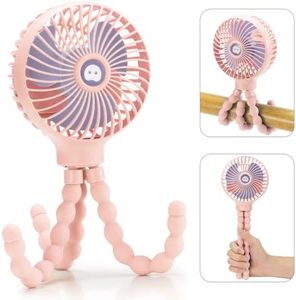
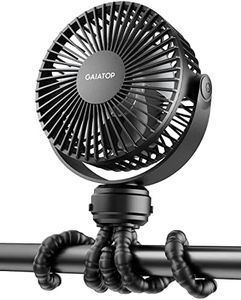
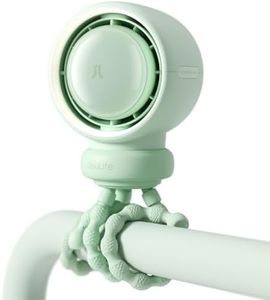
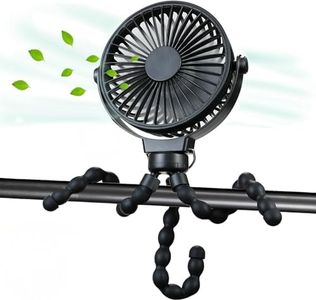
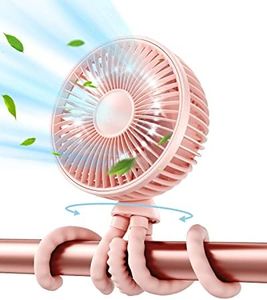

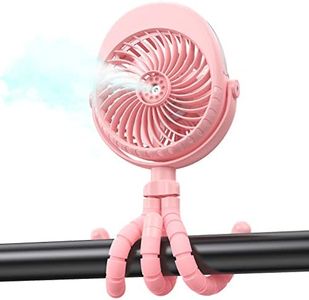
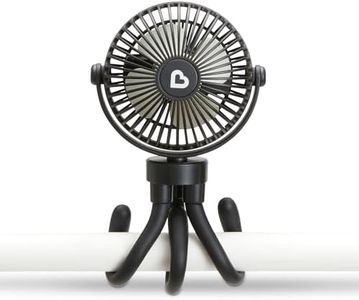

![Moowski Portable Pram Fan, Baby Stroller Fan, [USB or 4000mAh Battery Powered] Handheld Mini Fan for Kids with Flexible Tripod, 3 Speed Pram Fan Clip on Desk Bike Campling Traveling (Black)](https://images-proxy.bestreviews.guide/cN3whC1ZyrEDirpQJkK95srDal4=/0x300/https://m.media-amazon.com/images/I/41WVBAFpFyL._AC_CX679_.jpg)
